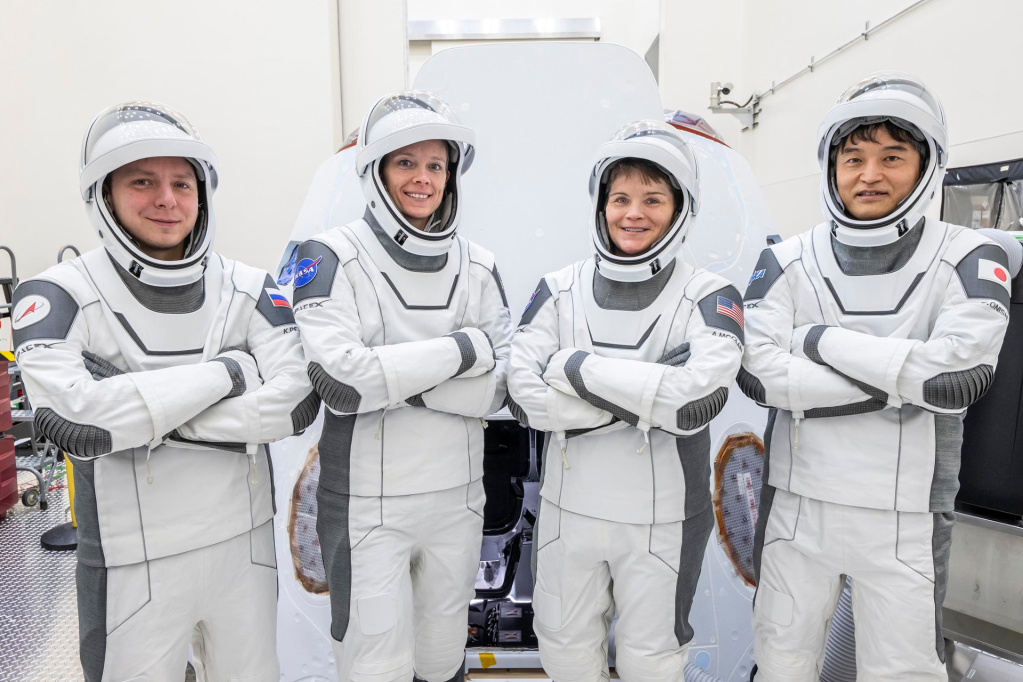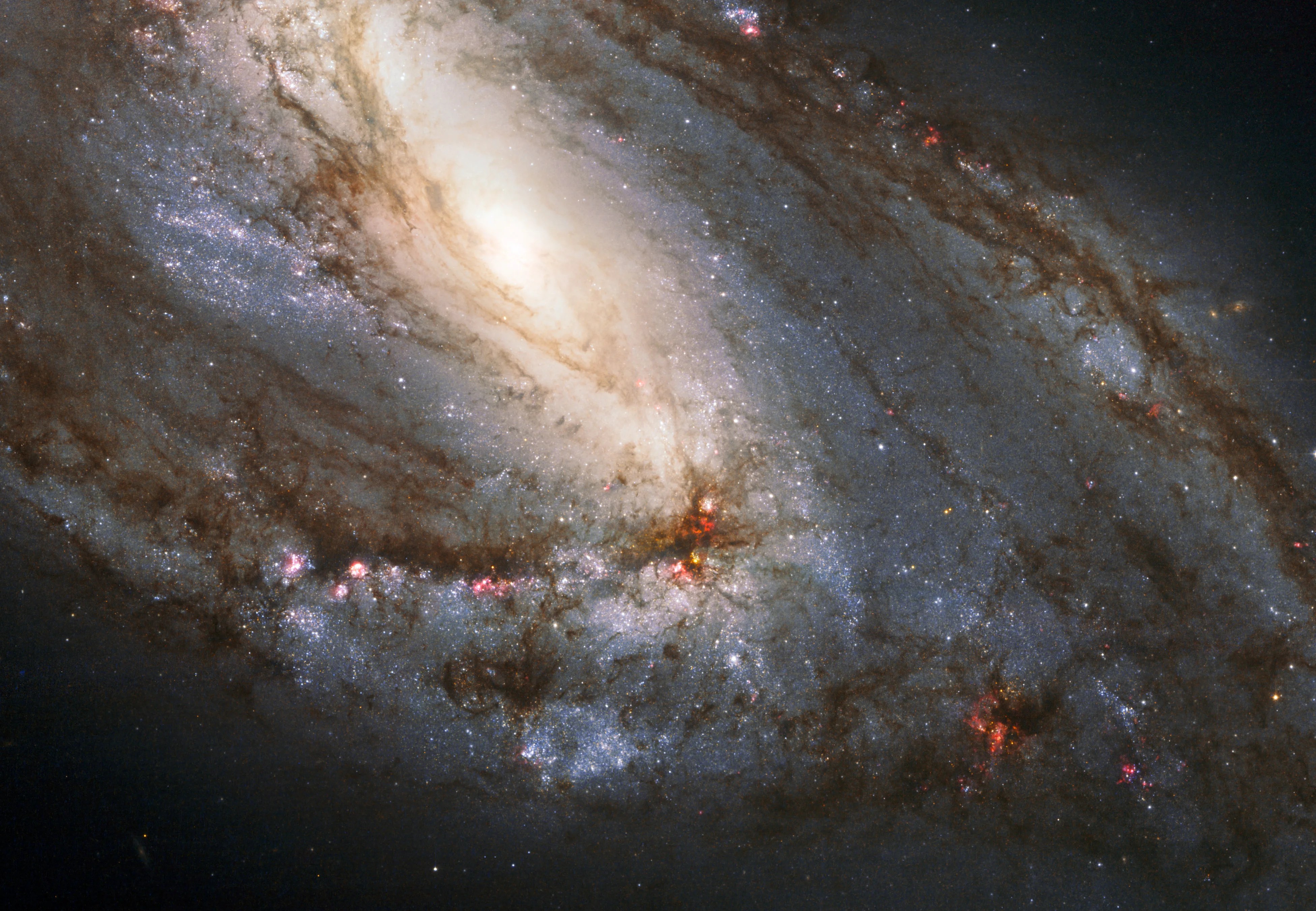This series of articles features the 13 unique individuals who have led NASA’s Johnson Space Center (JSC) in Houston during the past 60 years and continue to lead us into the future of human space exploration. The first four installments (Parts 1, 2, 3, and 4) described the Project Management Building and the center’s first seven directors through 2001. This article, covering the period from 2001 to 2005, focuses on JSC’s eighth and ninth directors – Roy S. Estess and Jefferson D. Howell – as they led the center at the start of the new millennium. In addition to making high-level decisions to maintain America’s leadership in human spaceflight, JSC’s center directors’ many varied activities also include greeting astronauts after their return from space, dedicating new facilities, and meeting with local politicians, world leaders, and celebrities. For more information about the directors who led the center, please visit Johnson Space Center Directors | NASA.
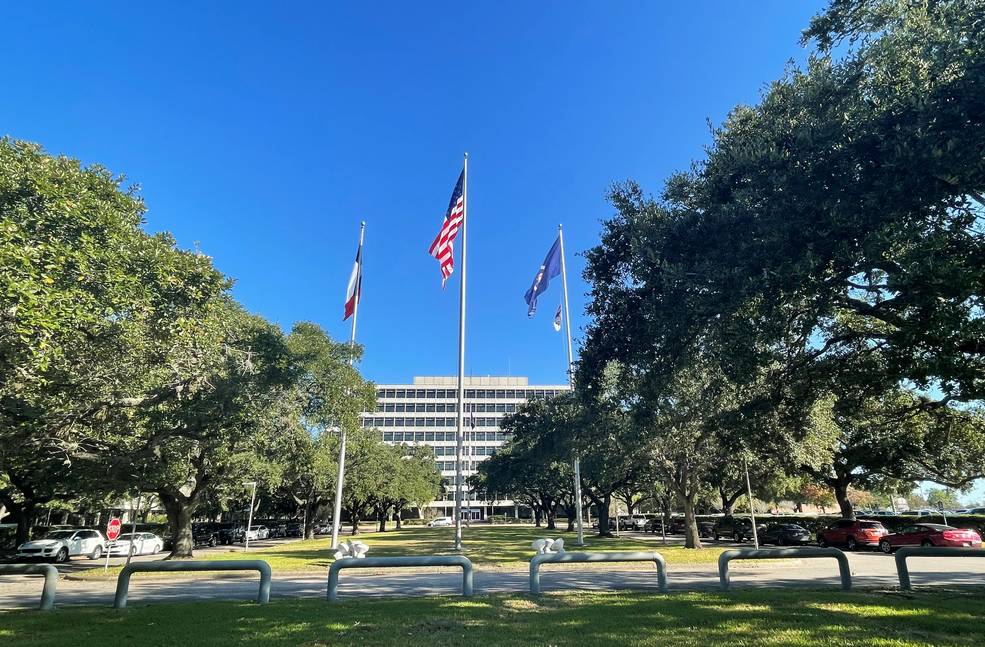
The Project Management Building, known today as Building 1, with its four flagpoles, at NASA’s Johnson Space Center in Houston in November 2021.
Roy S. Estess (Acting director February 2001 to March 2002)
Estess graduated from Mississippi State University with a degree in aerospace engineering. In 1966, he joined NASA’s Mississippi Test Facility, now NASA’s John C. Stennis Space Center (SSC) in Mississippi, as an Apollo Program engine quality control engineer working on the Saturn V rocket’s second stage. In 1980, he was named as the deputy director of the facility, then known as the National Space Transportation Laboratories, serving in that capacity until 1989, when he became director of SSC.
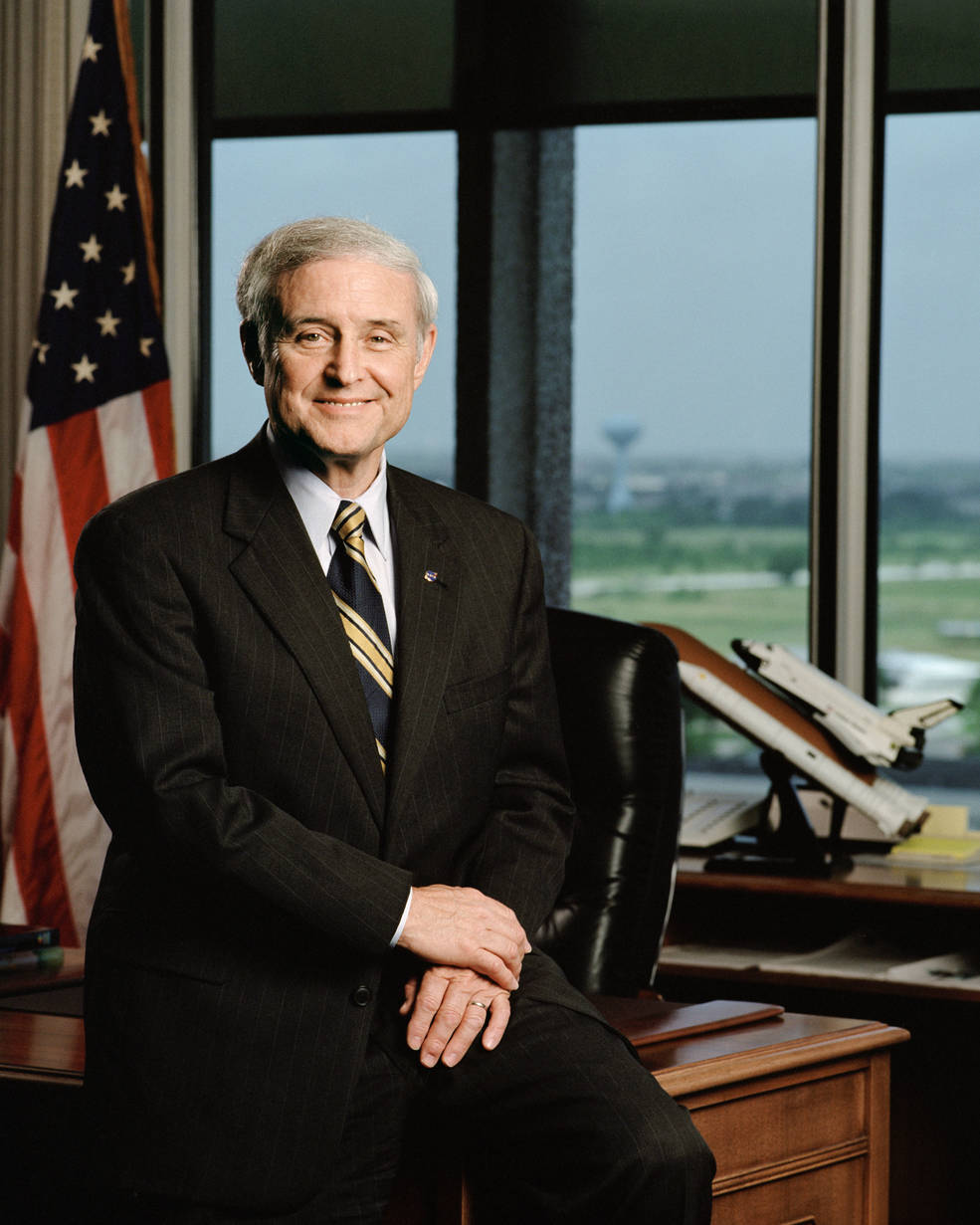

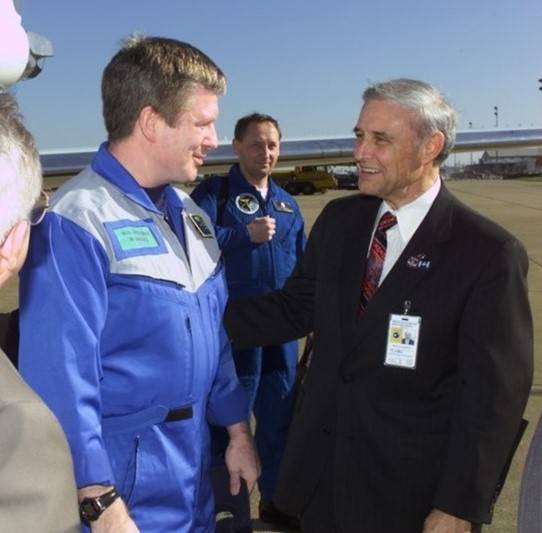
Left: Official portrait of Roy S. Estess, the eighth director of NASA’s Johnson Space Center (JSC) in Houston. Middle: William W. Parsons, JSC deputy director from March 2000 to November 2001. Right: Estess, right, welcomes Expedition 1 commander William M. Shepherd to Ellington Field following his return from the space station.
Following NASA Administrator Daniel S. Goldin’s announcement that JSC Director George W.S. Abbey would become his new special assistant for international affairs, he named Roy S. Estess, director of SSC, as acting JSC director, effective Feb. 23, 2001. Deputy Director William W. “Bill” Parsons provided continuity during the transition. On Nov. 15, 2001, Estess named Brock R. “Randy” Stone, with many years of experience in Mission Control and most recently as JSC’s acting associate director of management, as JSC’s deputy director. Stone succeeded Parsons, who transferred to SSC to become Center Operations and Support Director. Estess provided strong leadership to the center in the aftermath of the Sep. 11, 2001, terrorist attacks.
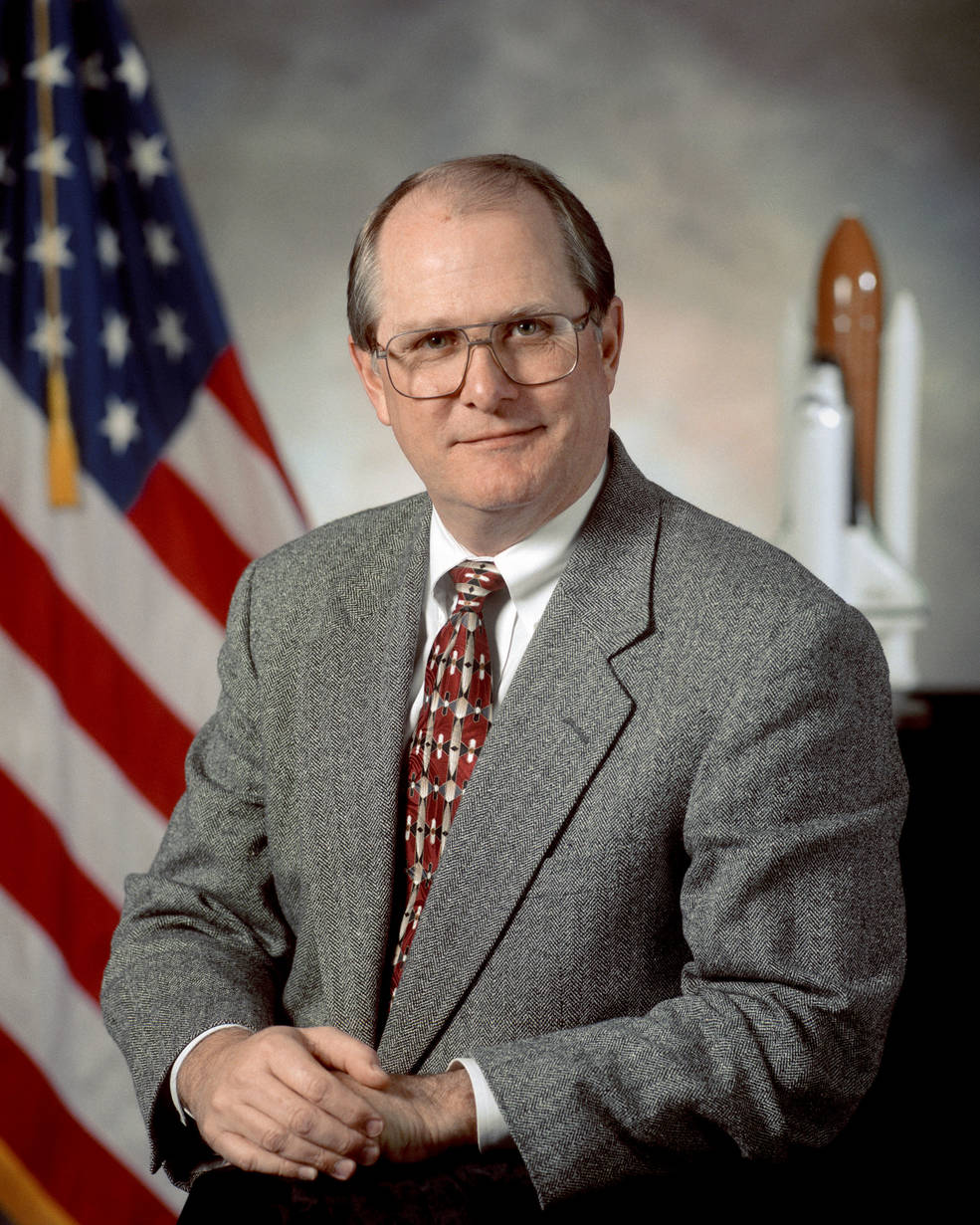
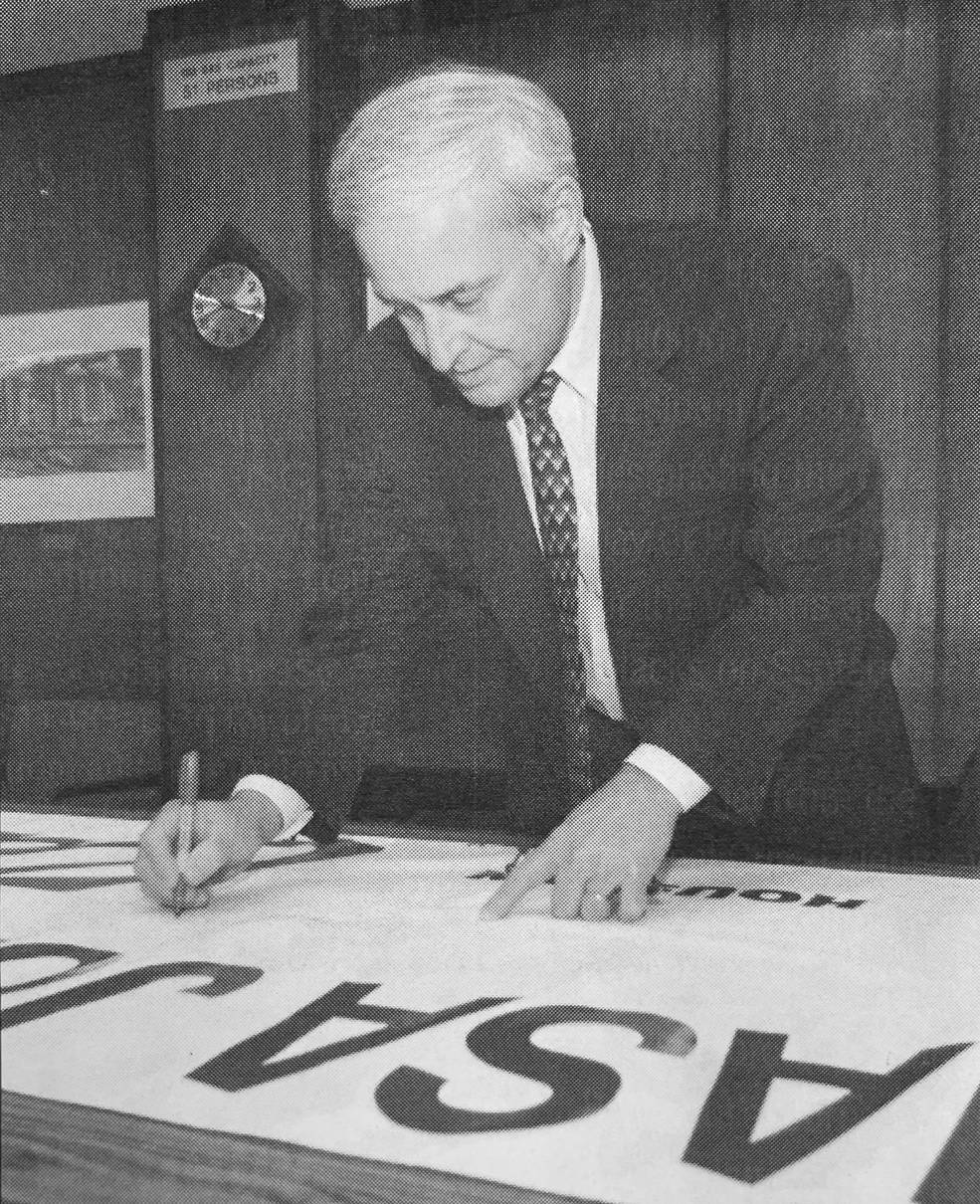
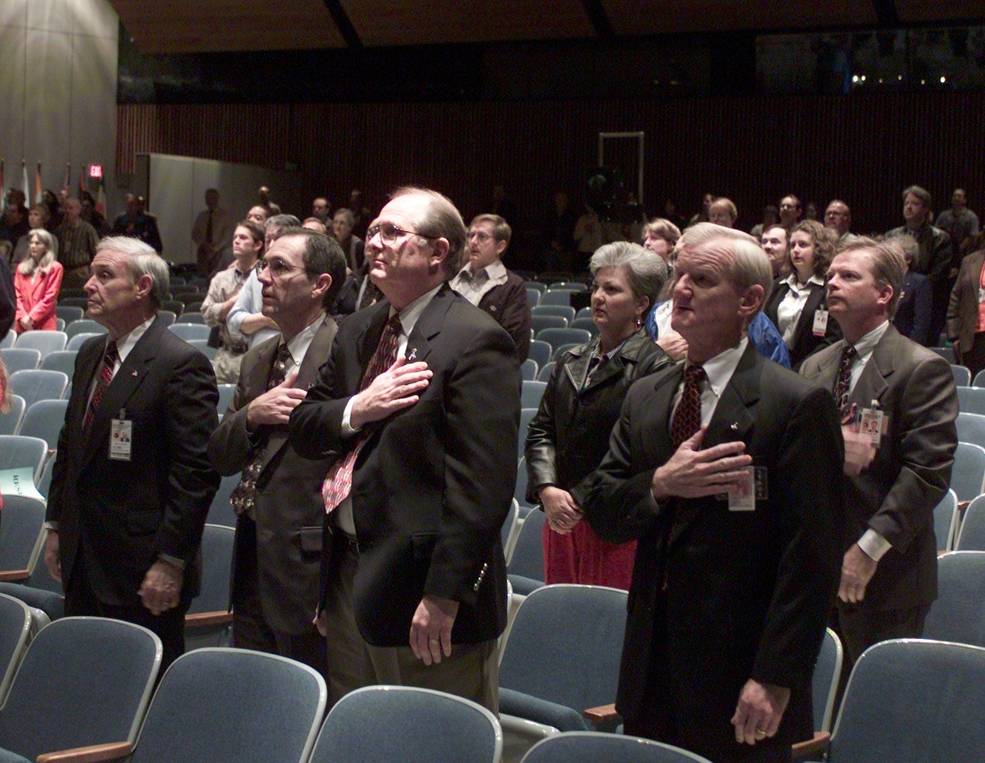
Left: Brock R. “Randy” Stone, deputy director of NASA’s Johnson Space Center (JSC) in Houston from November 2001 to November 2002. Middle: Acting JSC Director Roy S. Estess signing a banner dedicated to the victims of the 9/11 attacks. Right: Estess, left, and Stone, third from left, during a December 2001 ceremony in JSC’s Teague Auditorium honoring the victims of the 9/11 attacks.
During Estess’ tenure as acting director, assembly of the International Space Station continued with the addition of the Canadian-built remote manipulator system robotic arm, the Quest Joint Airlock, and the Pirs Docking Compartment. The addition of the latter two elements provided the station with spacewalking capabilities from the American and Russian segments without the need to have a space shuttle docked. Long-duration crew members completed the first three crew exchanges to maintain a continuous presence in space. Five of the space shuttle missions flown during this time were dedicated to station assembly while the sixth completed a repair and refurbishment of the Hubble Space Telescope. During this time, astronauts and cosmonauts completed a then-record 21 spacewalks.
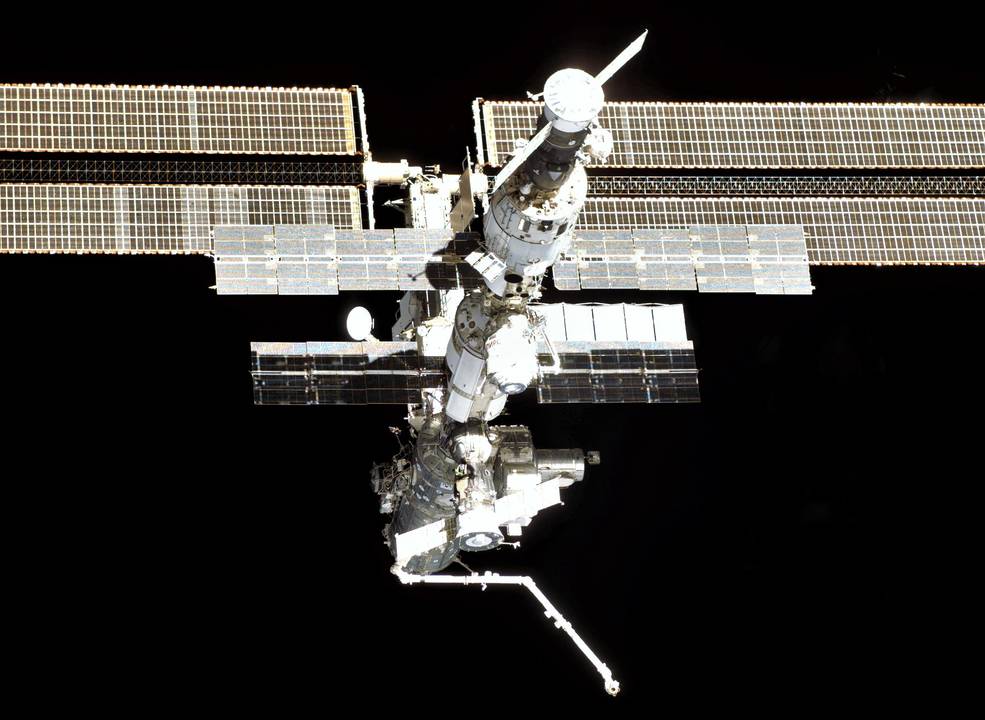
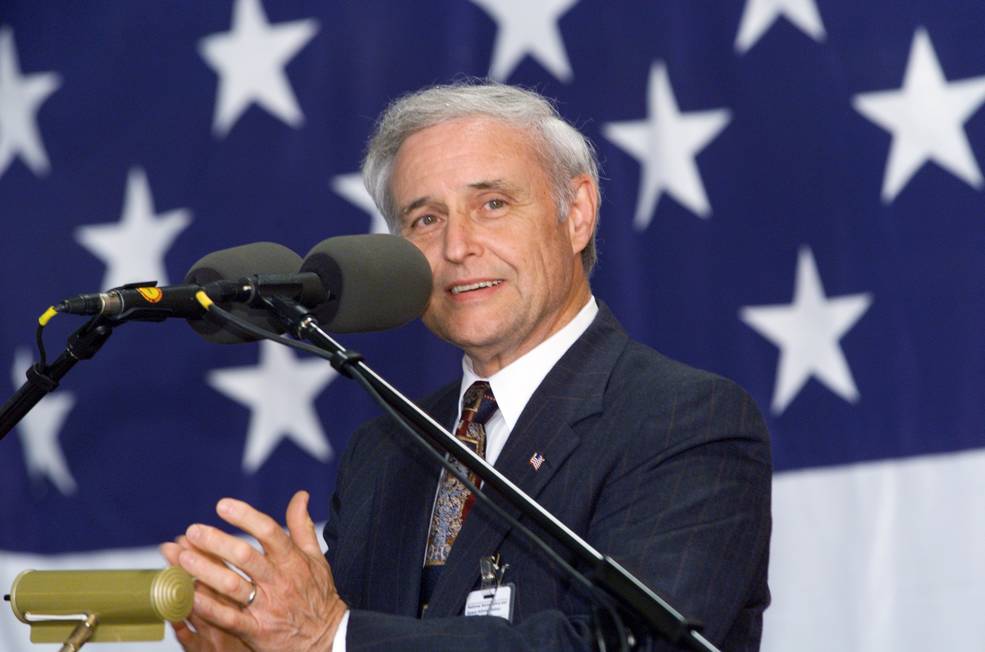
Left: The International Space Station photographed by the STS-108 crew in December 2001, showing the Canadian-built Remote Manipulator System, at bottom, the U.S.-built Quest Joint Airlock just above it, and the Russian-built Pirs docking compartment and airlock, the three elements added to the growing facility during the tenure of Acting Johnson Space Center Director Roy S. Estess. Right: Estess speaking at the welcome home ceremony for the STS-109 crew at Ellington Field in March 2002.
When NASA Administrator Sean O’Keefe named a permanent JSC director, effective in April 2002, Estess returned to his position as SSC director. He retired from NASA on Aug. 25, 2002, and Parsons succeeded him SSC director. In 2003, Estess received the prestigious National Space Trophy from the Rotary National Award for Space Achievement Foundation in recognition of his contributions during his 37-year career at NASA. He died on June 25, 2010, at age 71.
Jefferson D. “Beak” Howell (April 2002 to November 2005)
After a 37-year career in the United States Marine Corps, Howell, known by his nickname “Beak,” retired as a lieutenant general. He came to JSC in 1999 as a program manager for Science Applications International Corporation (SAIC), a support contractor for the Safety, Reliability and Quality Assurance organization. He worked there for three years until selected to be JSC’s next director.
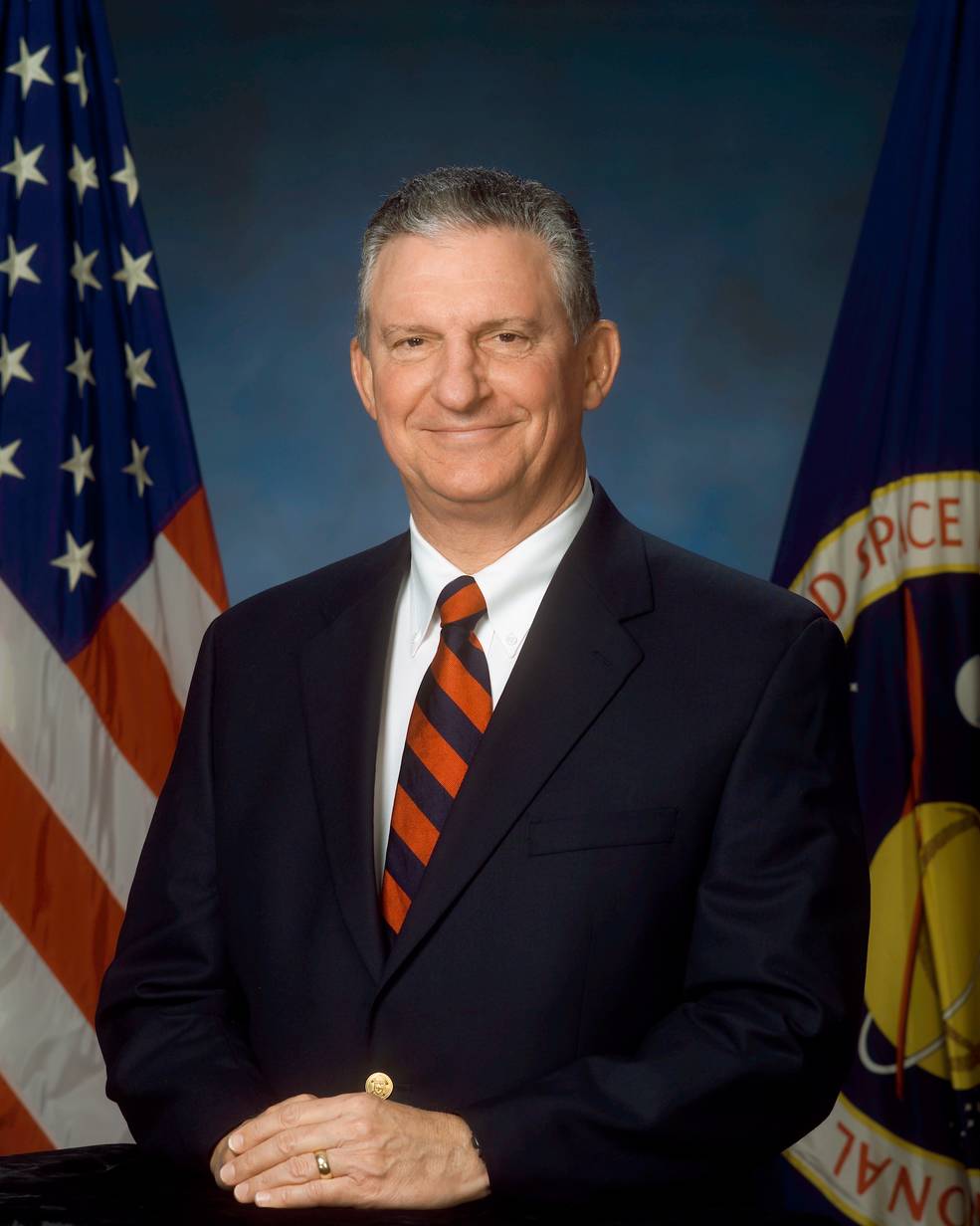
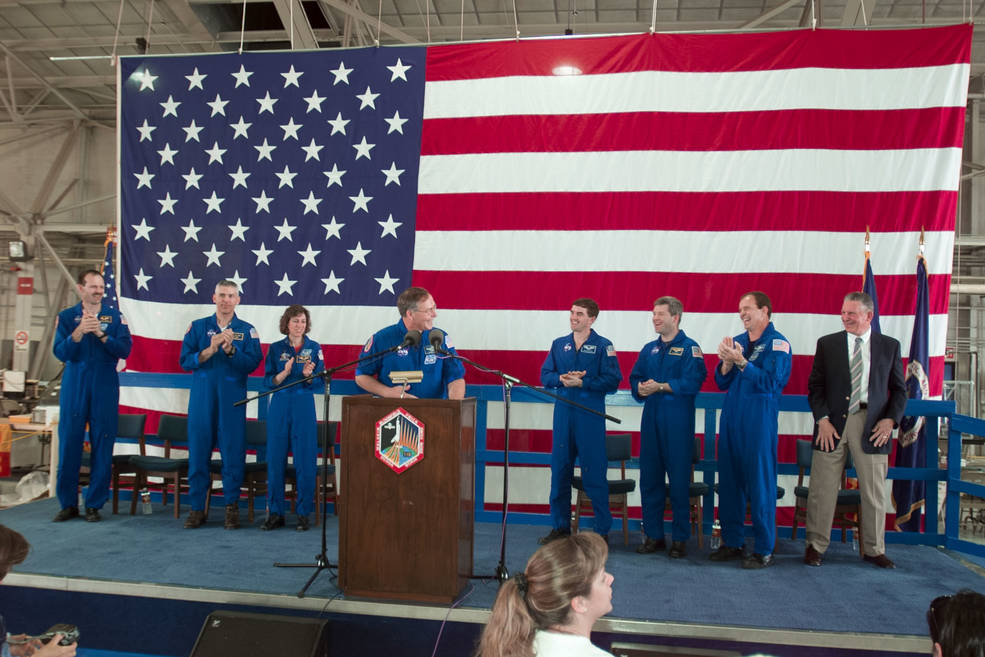
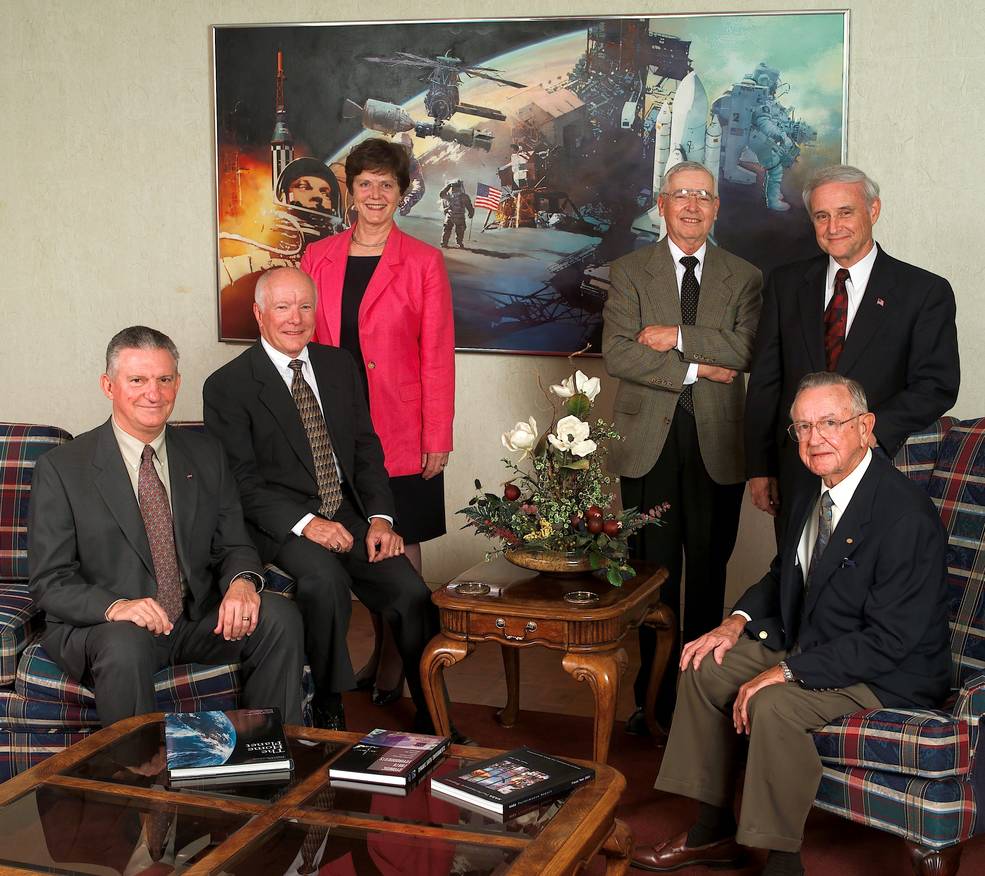
Left: Official portrait of Jefferson D. “Beak” Howell, the ninth director of NASA’s Johnson Space Center (JSC) in Houston. Middle: In April 2002, Howell, far right, at the welcome home celebration at Ellington Field for the STS-110 crew, including future JSC Director Ellen L. Ochoa, third from left. Right: A reunion of JSC directors in August 2002 – Howell, left, Gerald D. Griffin, Carolyn L. Huntoon, Aaron Cohen, Roy S. Estess, and Christopher C. Kraft.
On Feb. 12, 2002, NASA Administrator Sean O’Keefe named Howell as JSC’s ninth director, effective April 1. Among the management changes Howell instituted, he named William H. “Bill” Gerstenmaier as the new International Space Station program manager, effective July 3, following the retirement of Thomas W. “Tommy” Holloway. Gerstenmaier had served as Holloway’s deputy since January 2001. In November 2002, Howell named astronaut Robert D. “Bob” Cabana as director of flight crew operations. During his tenure, four shuttle flights continued the assembly of the space station, adding three new truss segments and research facilities. He also led the center through the tragic loss of the Columbia space shuttle and its STS-107 crew on Feb. 1, 2003, and eventually, the STS-114 return-to-flight mission in July 2005.
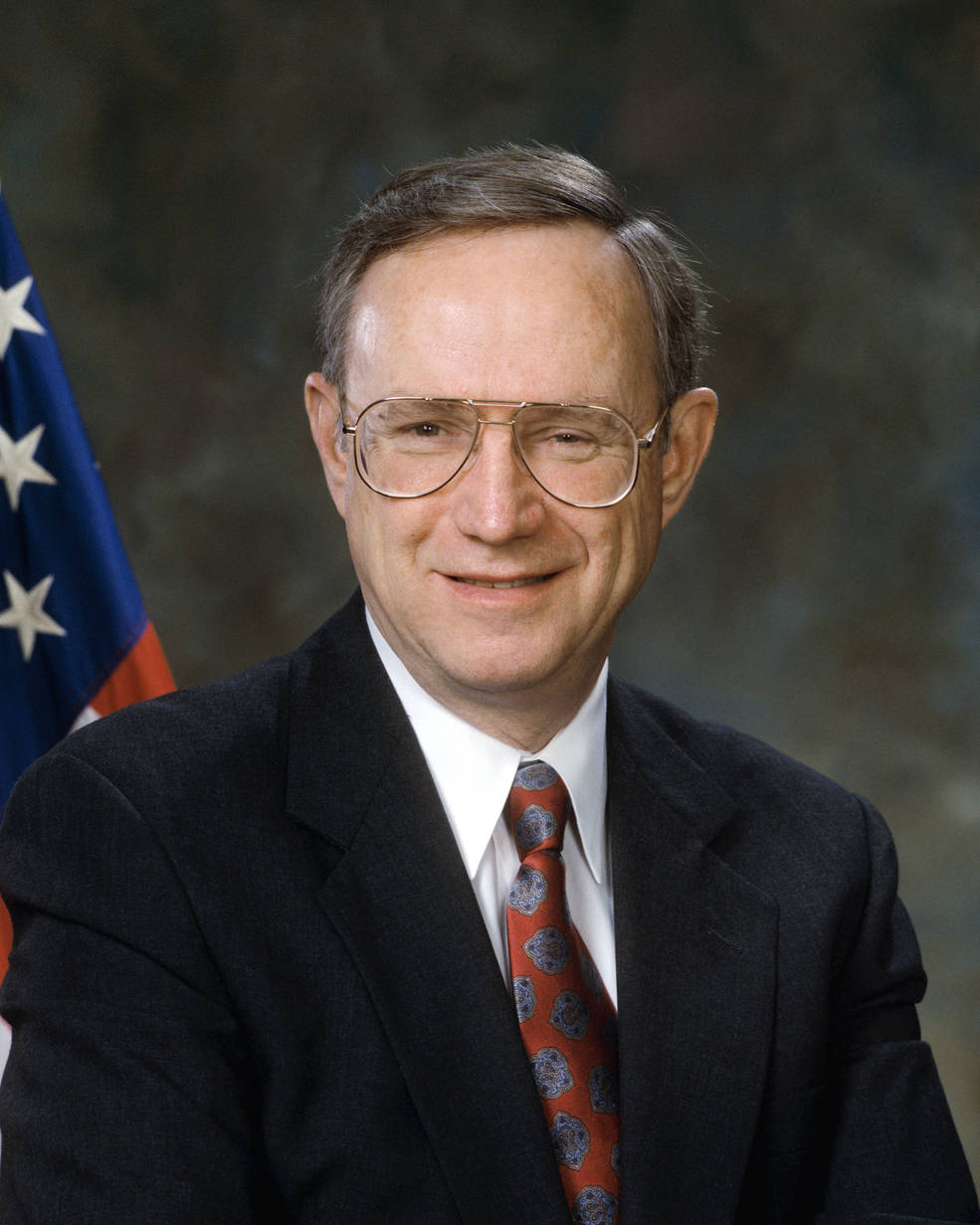
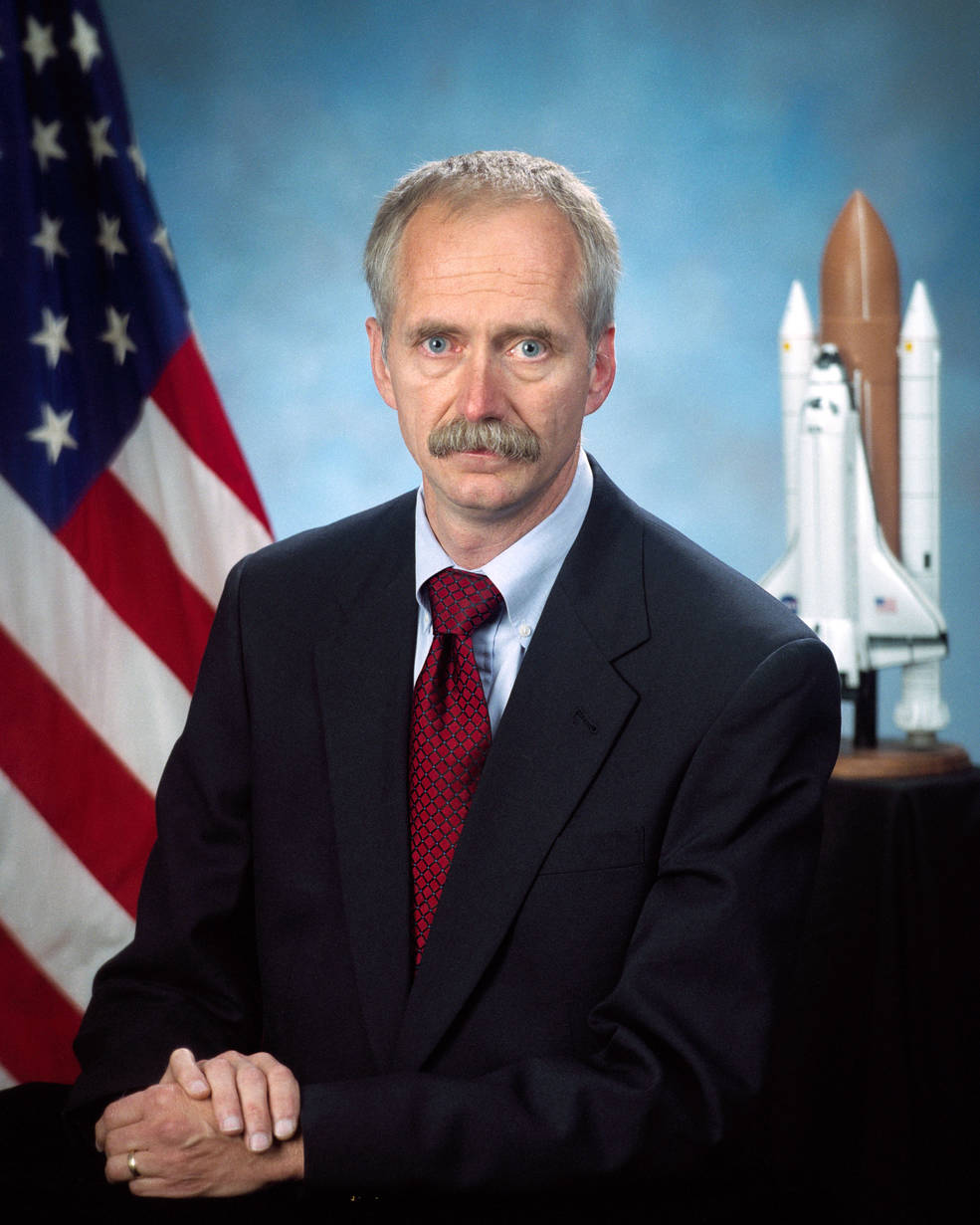
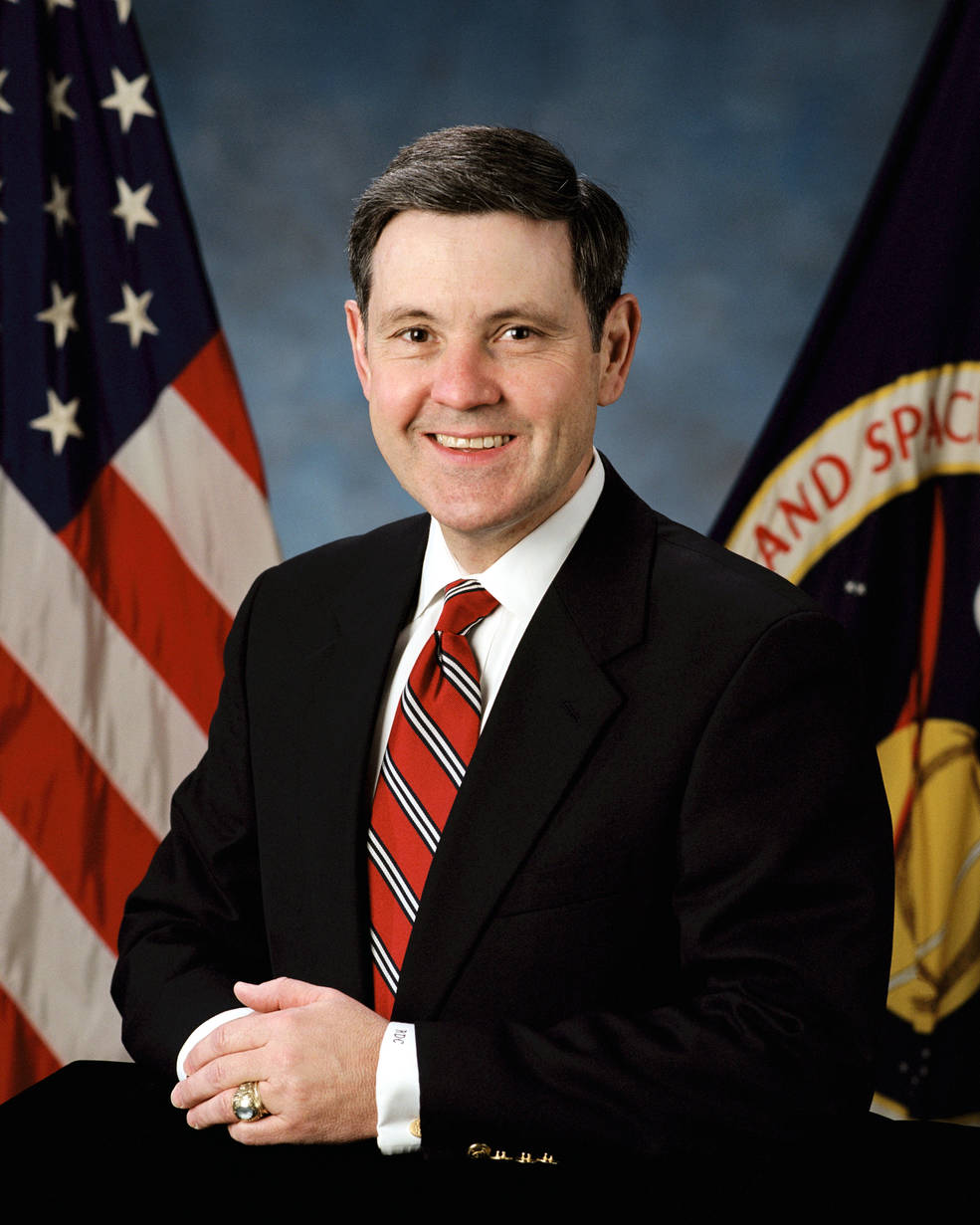
Left: Space Shuttle Program Manager Thomas W. “Tommy” Holloway retired in June 2002. Middle: Holloway’s deputy William H. Gerstenmaier succeeded him as space shuttle program manager in July 2002. Right: Astronaut Robert D. Cabana became director of flight crew operations in November 2002.
The tragic loss of space shuttle Columbia and its seven-member crew dealt a great blow to the NASA family, especially the JSC community. As center director, Howell’s leadership saw the employees through the period of mourning, the recovery efforts, the investigation into the causes of the accident, and enabled JSC to continue the important work of human spaceflight. Although the space shuttle fleet remained grounded for 29 months, crews continued to live and work aboard the space station. The international partnership responded by reducing the resident crew size from three to two, as Russia continued to resupply the facility and perform crew rotations.

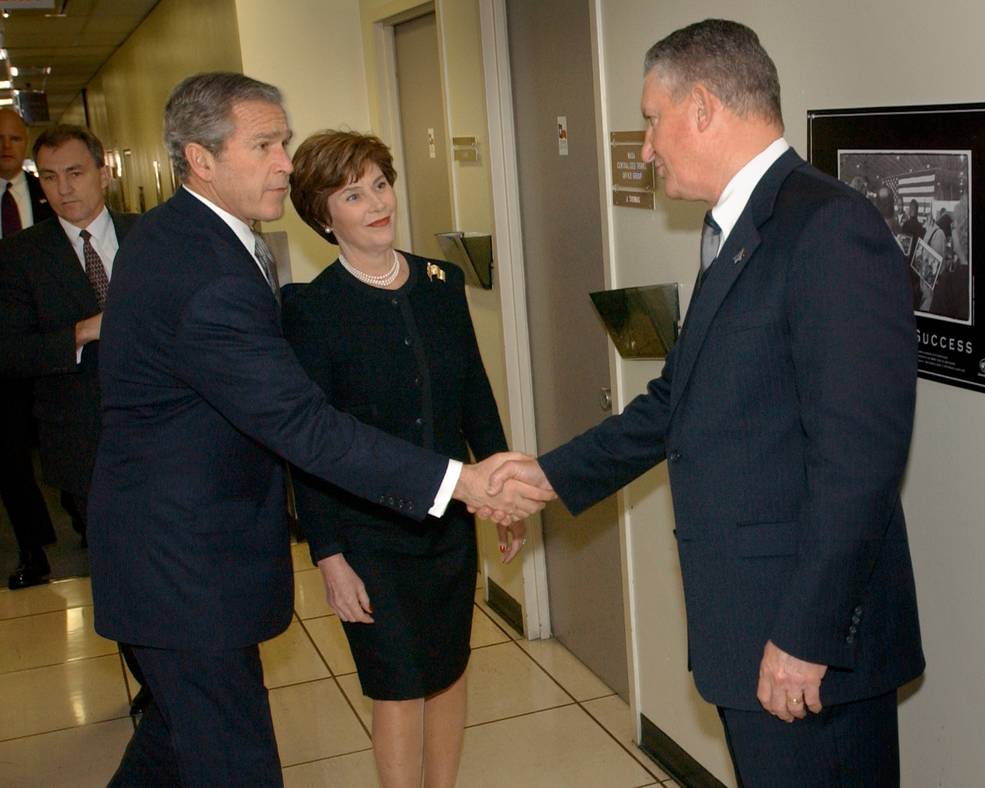
Left: In the Mission Control Center, director of NASA’s Johnson Space Center in Houston Jefferson D. Howell, second from left, welcomes former President George H.W. Bush and former First Lady Barbara Bush two days after the STS-107 Columbia accident. Right: Howell, greets President George W. Bush and First Lady Laura Bush before the ceremony honoring the STS-107 Columbia crew.
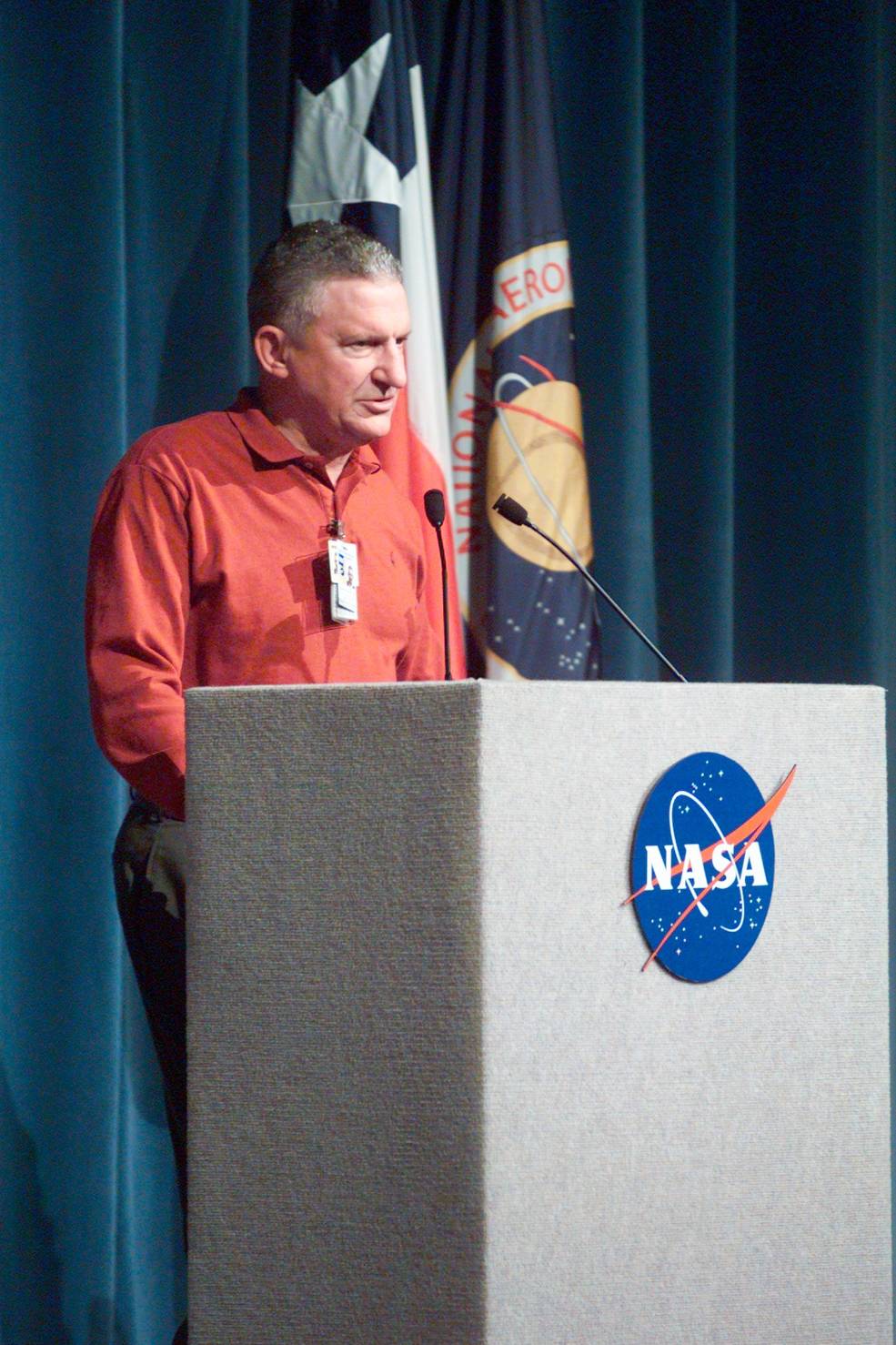
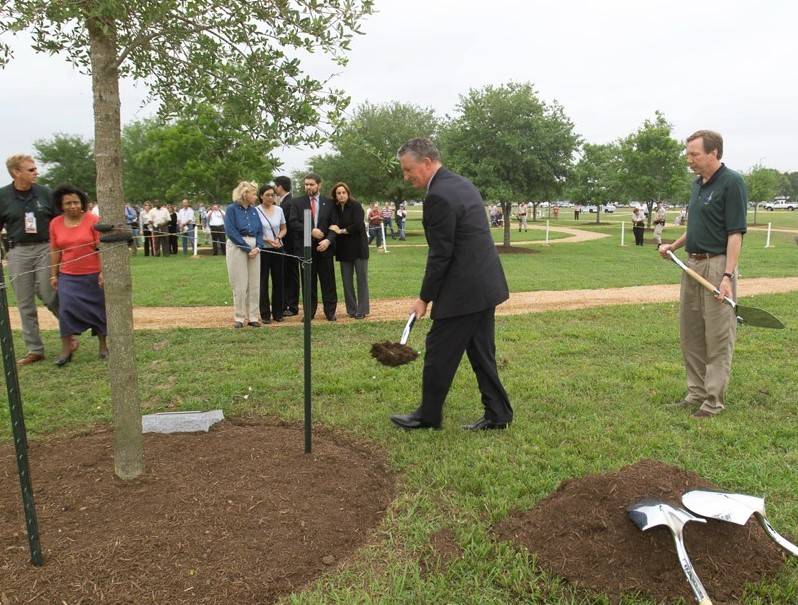
Left: Director of NASA’s Johnson Space Center (JSC) in Houston Jefferson D. Howell addresses employees in the days after the Columbia accident. Right: In April 2003, Howell leads the tree planting ceremony for the STS-107 Columbia crew at JSC.
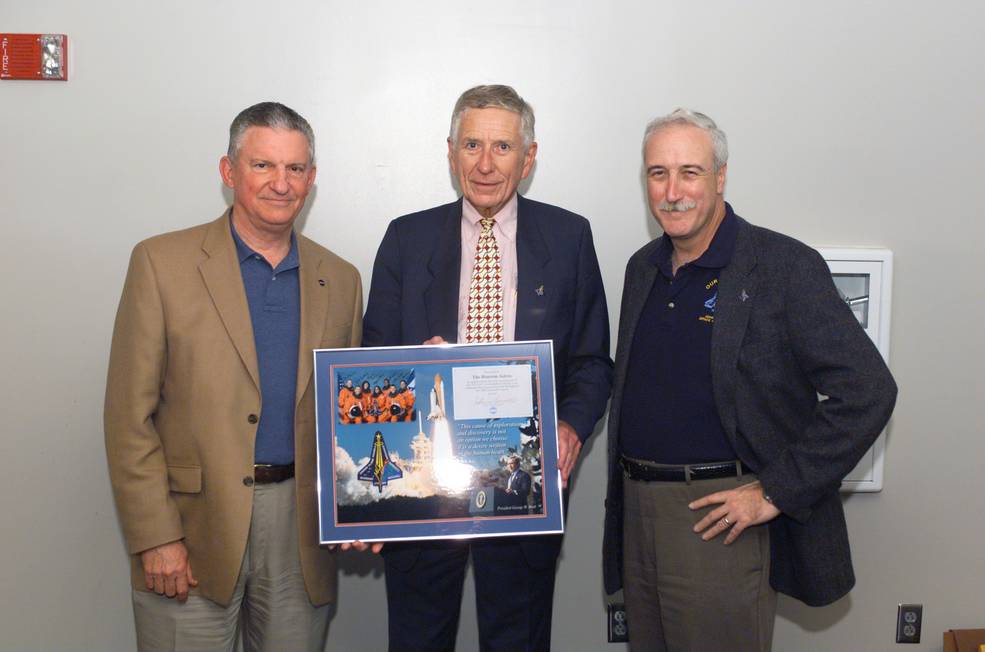
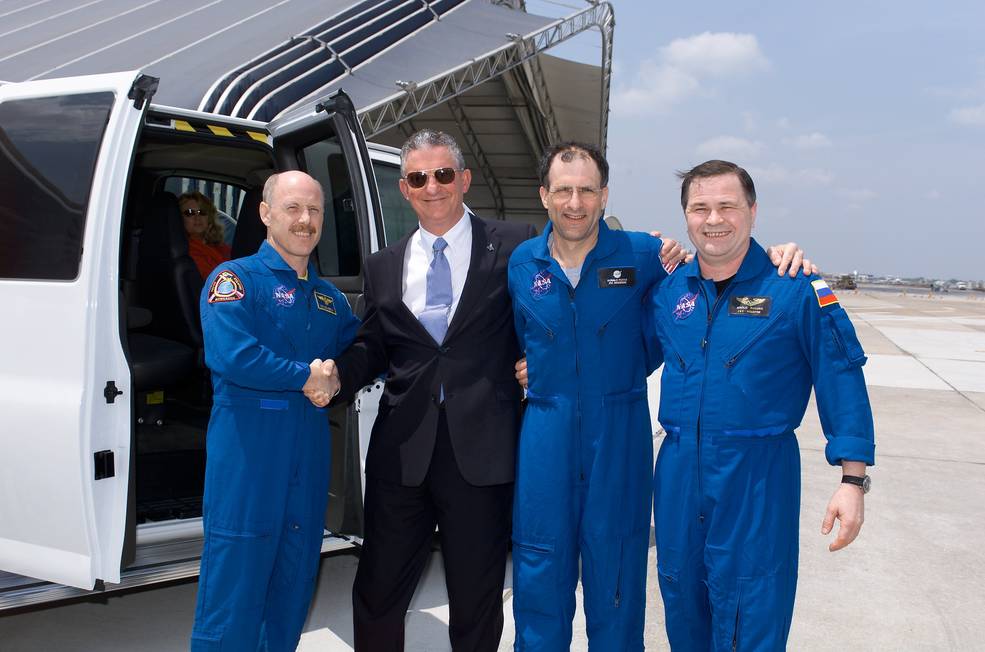
Left: Director of NASA’s Johnson Space Center (JSC) in Houston Jefferson D. Howell, left, with Houston Astros owner Drayton McLane and NASA Administrator Sean O’Keefe at the Astros tribute to the STS-107 Columbia crew. Right: Howell, second from left, greets the Expedition 6 crew upon their arrival at Ellington Field in May 2003.
Following the retirement of Space Shuttle Program Manager Ronald D. Dittemore on April 23, 2003, on May 9 NASA named SSC Director and former JSC Deputy Director Bill Parsons as his successor. In July, Parsons named N. Wayne Hale, manager of launch integration at NASA’s Kennedy Space Center in Florida, as his acting deputy. They led the team that implemented the recommendations of the Columbia Accident Investigation Board (CAIB) to safely return the space shuttle to flight. Howell led the center in making the cultural and management changes recommended by the CAIB, such as the establishment of the Joint Leadership Team made up of senior members from NASA and its contractors.
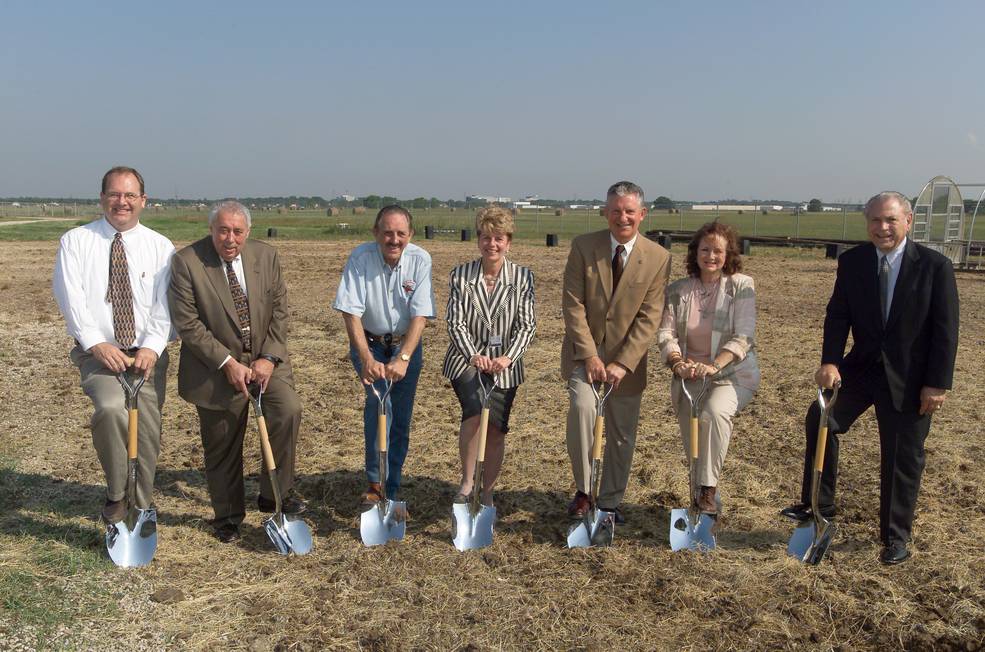
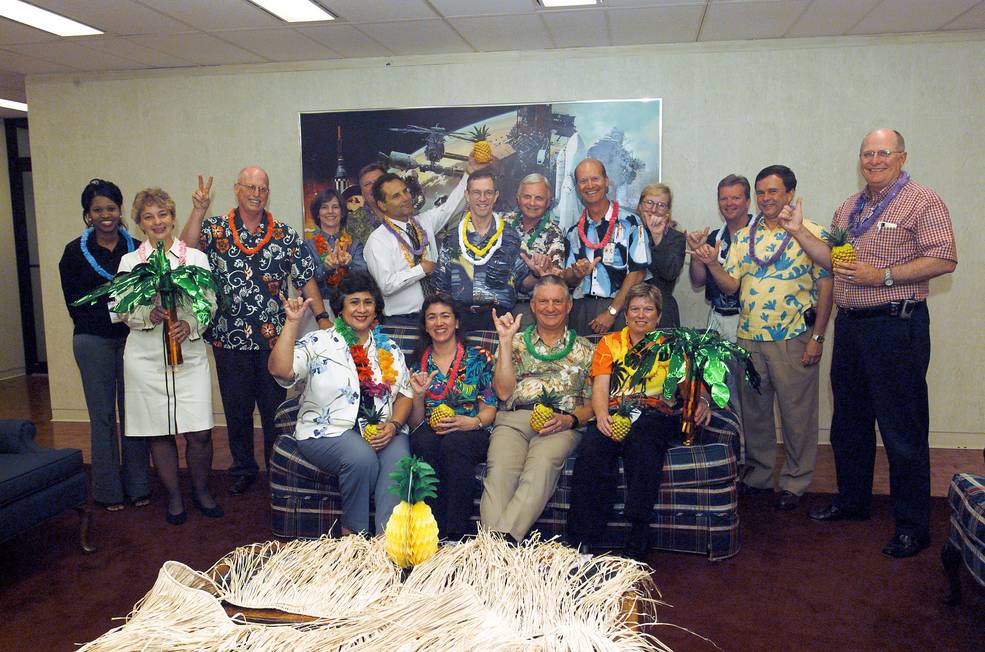
Left: In May 2003, Director of NASA’s Johnson Space Center (JSC) in Houston Jefferson D. Howell, right, at the groundbreaking of the visitor’s pavilion for the Longhorn Project, with former JSC director George W.S. Abbey, second from left. Right: On July 1, 2003, In the Mission Control Center, Howell, seated second from right, joins in the birthday celebration for astronaut Ed Lu aboard the space station.
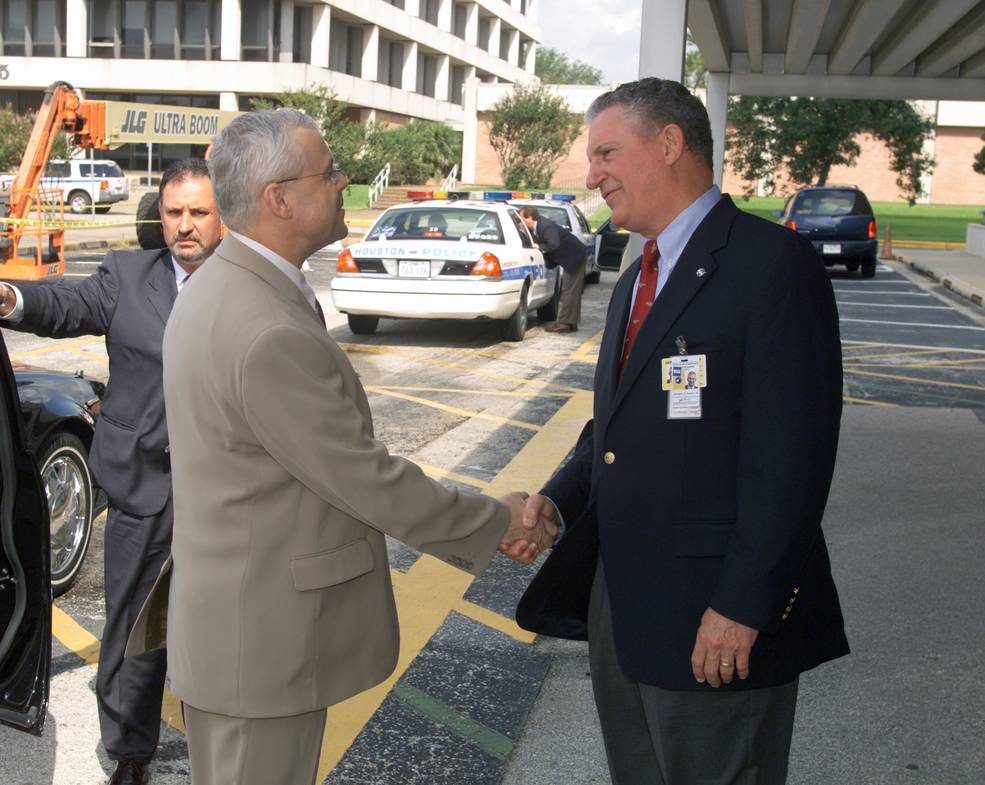

Left: In July 2003, director of NASA’s Johnson Space Center Jefferson D. Howell, right, greets Prime Minister Vladimir Špidla of the Czech Republic outside the Mission Control Center. Right: In October 2003, Howell, right, greets President Jiang Zemin of the People’s Republic of China outside the Mission Control Center.
On Jan. 14, 2004, President George W. Bush announced the Vision for Space Exploration (VSE). Partly in response to the Columbia accident, the vision sought to implement a sustainable and affordable plan to extend human presence beyond low Earth orbit. Its major points included returning the space shuttle to flight to finish assembly of the space station by 2010, then retiring the space shuttle and replacing it with a new Crew Exploration Vehicle, named Orion in August 2006. This would lead to a return of humans to the Moon and ultimately a human expedition to Mars. Howell led JSC in meeting the challenges of implementing the VSE, including the establishment of the Constellation Program in October 2005, and leading the development of the Orion crew vehicle. In other management changes, following Randy Stone’s retirement, in March 2004 Howell named Director of Flight Crew Operations Cabana as JSC’s deputy center director. Cabana served in that position until October 2007, when he became director of SSC.
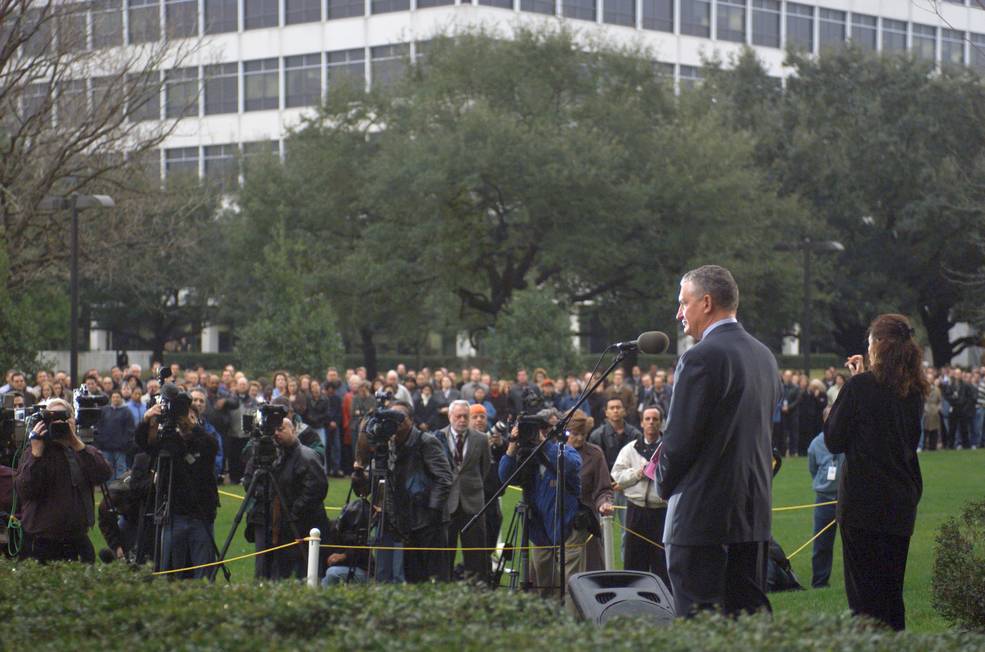

Left: Director of NASA’s Johnson Space Center in Houston Jefferson D. Howell addresses employees on the one-year anniversary of the STS-107 Columbia accident. Right: The astronaut class of 2004.
To maintain a cadre to support future space shuttle, space station, and exploration missions, NASA selected a new group of astronaut candidates, announcing the Class of 2004 on May 6. The group comprised 11 U.S. candidates, including three educator astronauts to continue the work begun by teacher S. Christa McAuliffe, lost in the January 1986 Challenger accident, and three candidates from the Japan Aerospace Exploration Agency. Two major programs at JSC underwent management transitions while the third new program received its first manager. On May 12, NASA named Michael T. Suffredini as the deputy International Space Station program manager. In August 2005 when Gerstenmaier became the associate administrator for human spaceflight at NASA Headquarters in Washington, D.C., Suffredini succeeded him as program manager. On Sep. 20, 2005, Parsons resumed his position as director at SSC and Hale became space shuttle program manager. On Nov. 1, NASA named director of JSC’s flight director office Jeffrey M. Hanley as the first manager of the Constellation Program with future JSC director Mark S. Geyer as his deputy.
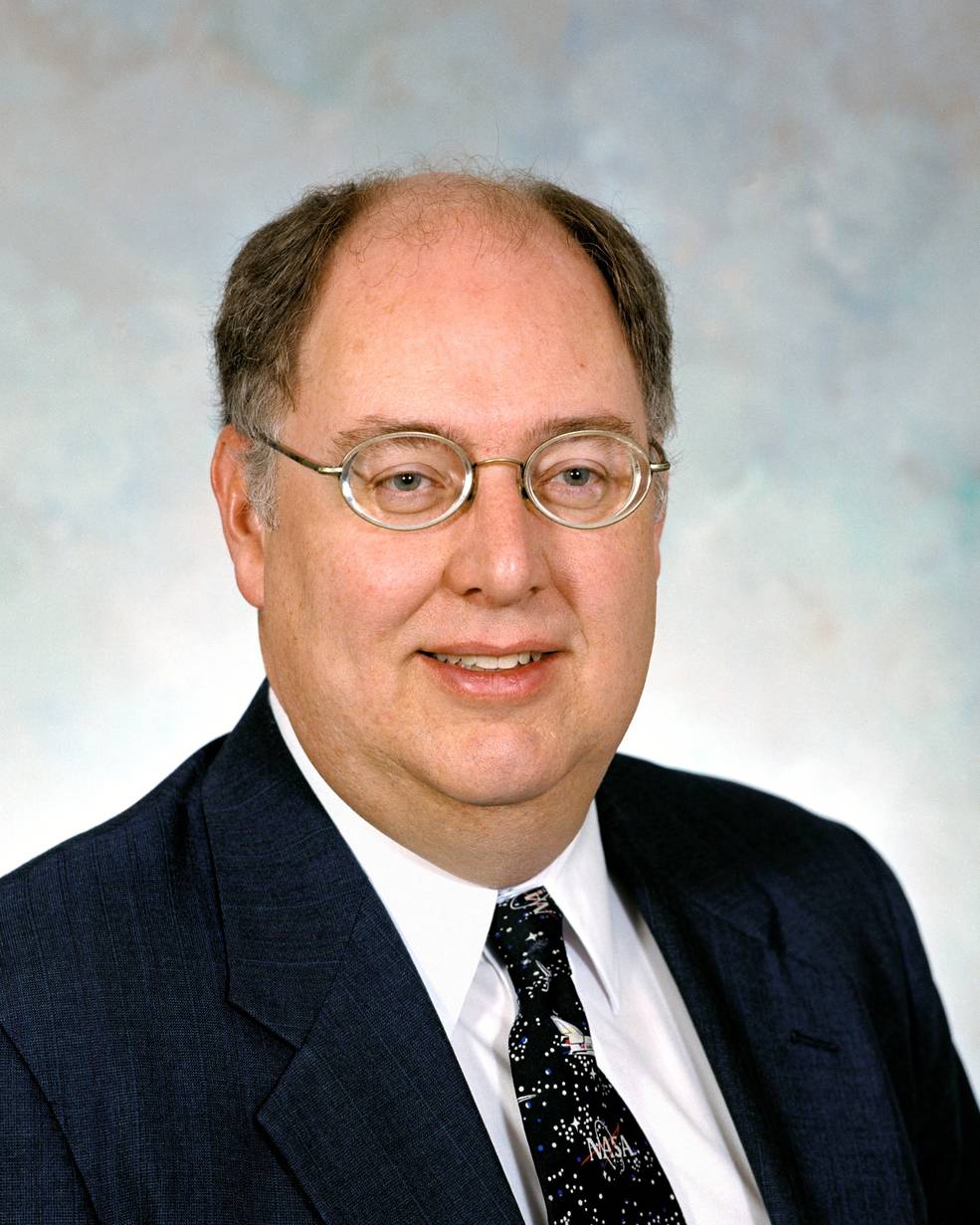
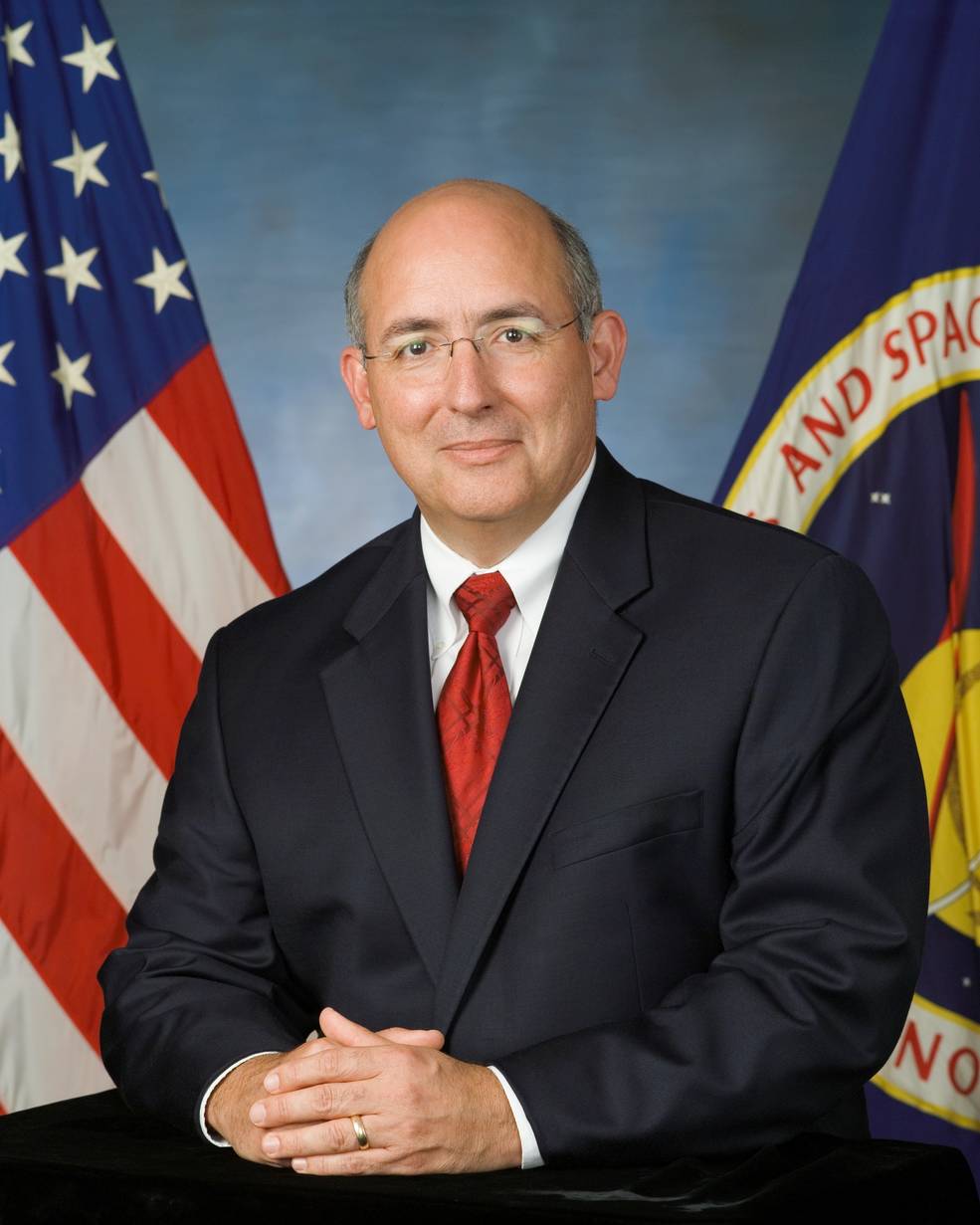
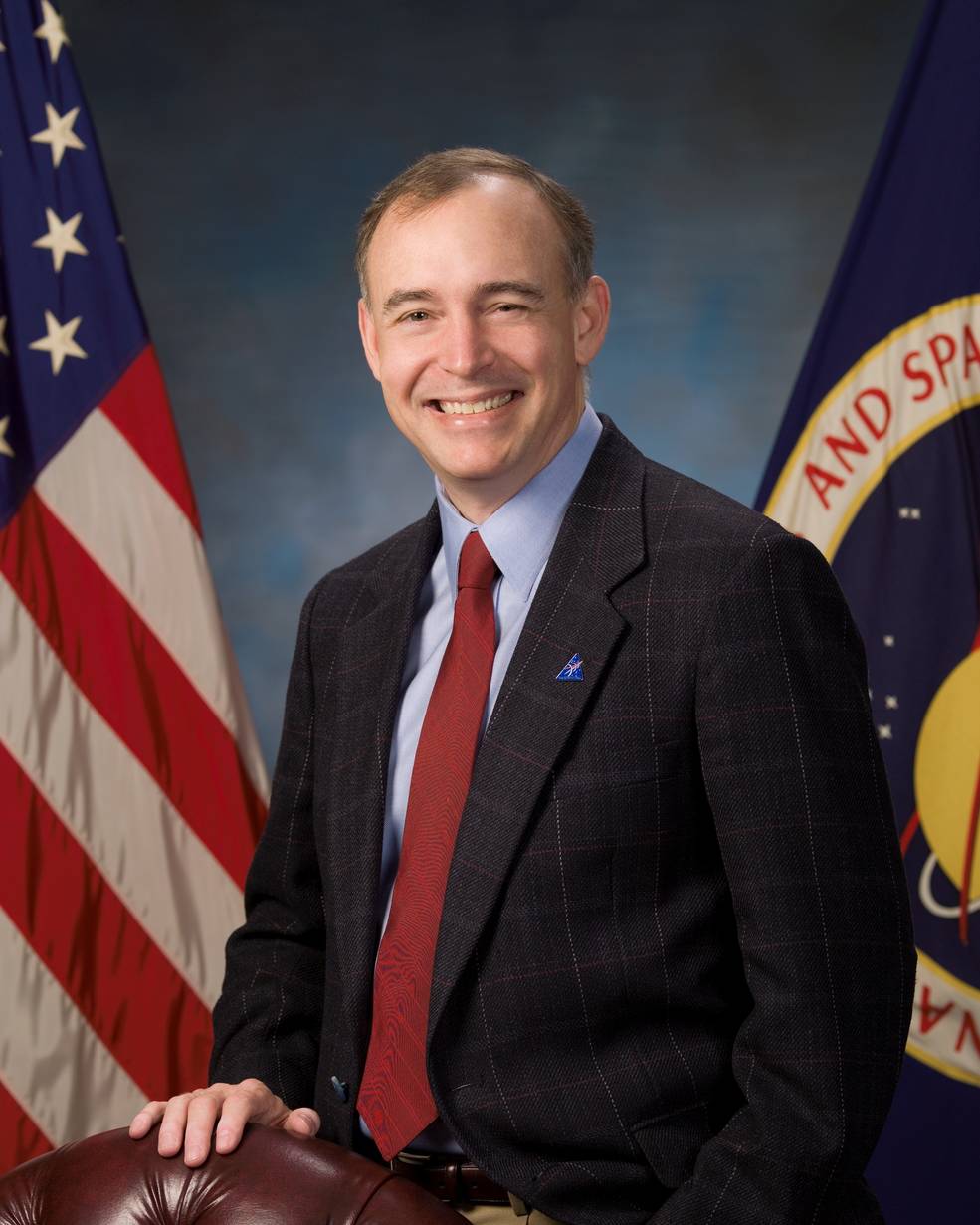
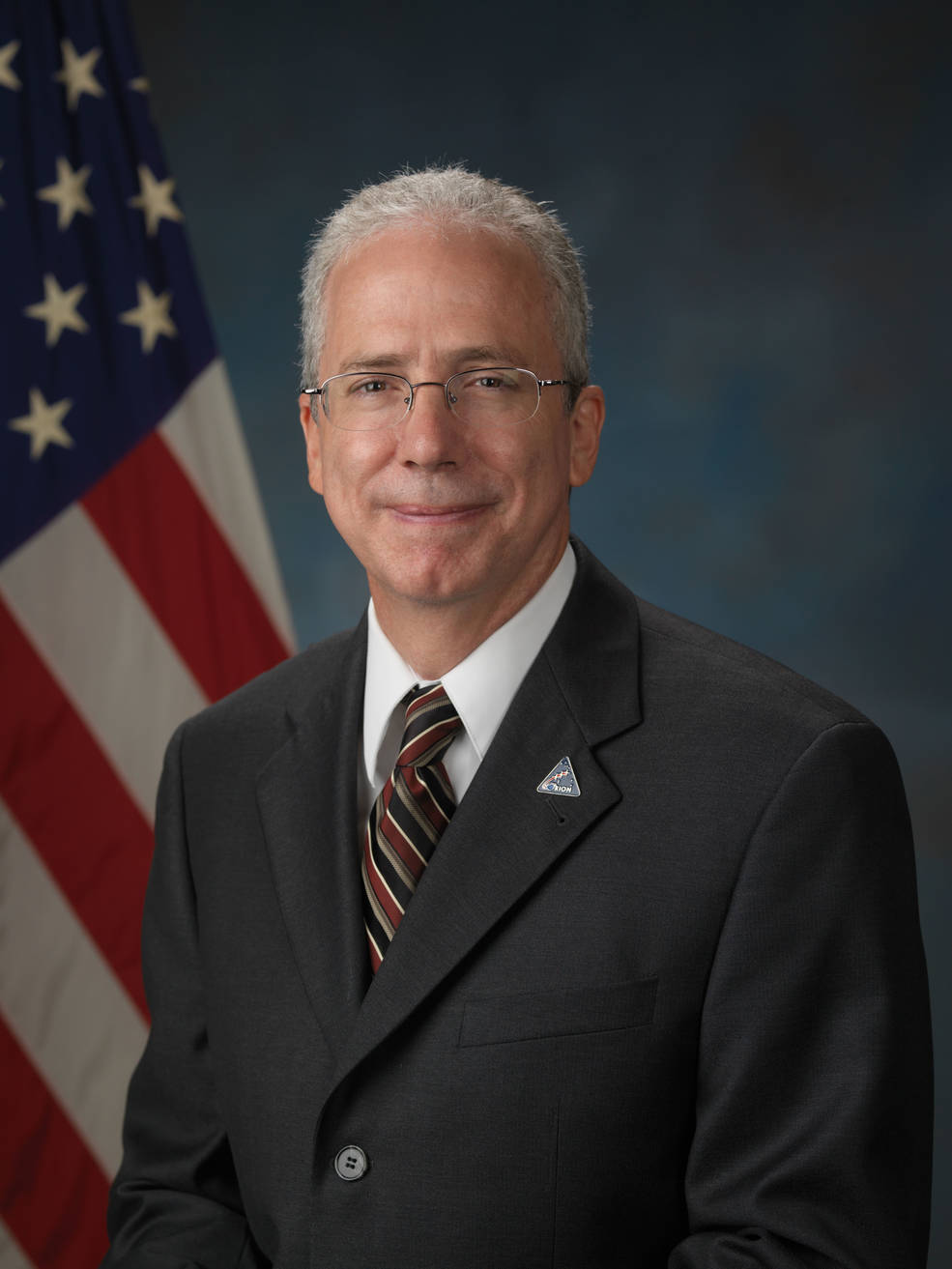
Left: N. Wayne Hale, manager of the Space Shuttle Program from September 2005 to February 2008. Middle left: Michael T. Suffredini, manager of the International Space Station Program from August 2005 to September 2015. Middle right: Jeffrey M. Hanley, the manager of the Constellation Program. Right: Mark S. Geyer, deputy manager of the Constellation Program.
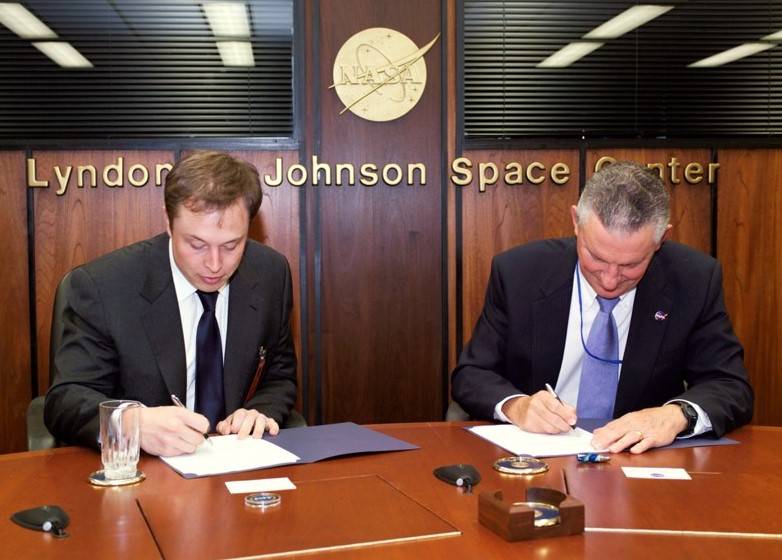
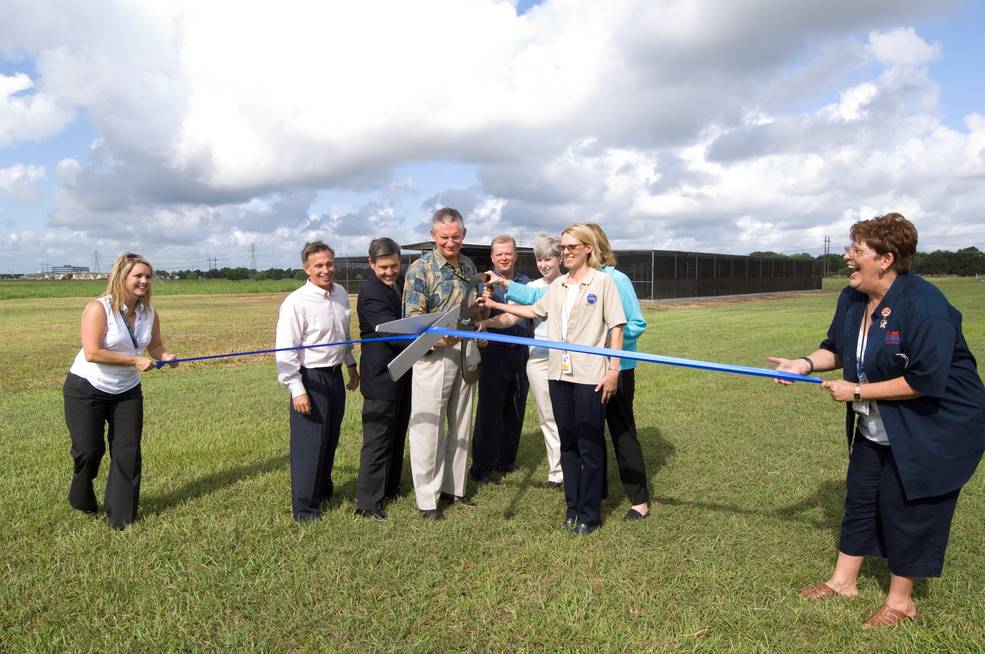
Left: Director of NASA’s Johnson Space Center (JSC) in Houston Jefferson D. Howell, right, signs a Space Act Agreement with Elon Musk of SpaceX in May 2005. Right: Former JSC Director Howell, center, cuts the ribbon for the Attwater prairie chicken farm at JSC in August 2006.
With the retirement of the space shuttle planned for 2010, NASA sought alternate means to transport cargo and ultimately crews to the space station, including the use of commercial entities. On May 23, 2005, NASA took one of the first steps in that direction with the signing of a Space Act Agreement with Space Exploration Technologies Corporation, commonly known as SpaceX, of Hawthorne, California, to research strategies for future human spaceflight systems. Howell signed the agreement with SpaceX CEO Elon Musk. Howell, a strong advocate of education and outreach, partnered in April 2005 with the Houston Zoo to establish a breeding facility for the endangered Attwater prairie chicken. Howell said, “…the JSC team is excited about this partnership. Part of NASA’s mission is to understand and protect our home planet, and we are happy to play a small part in preserving the Attwater prairie chicken.” Although he had left JSC by the time the facility opened, he cut the ribbon at its dedication in August 2006. In another arrangement with the Houston Zoo, JSC established a grove of eucalyptus trees to provide a stable supply for their koalas.
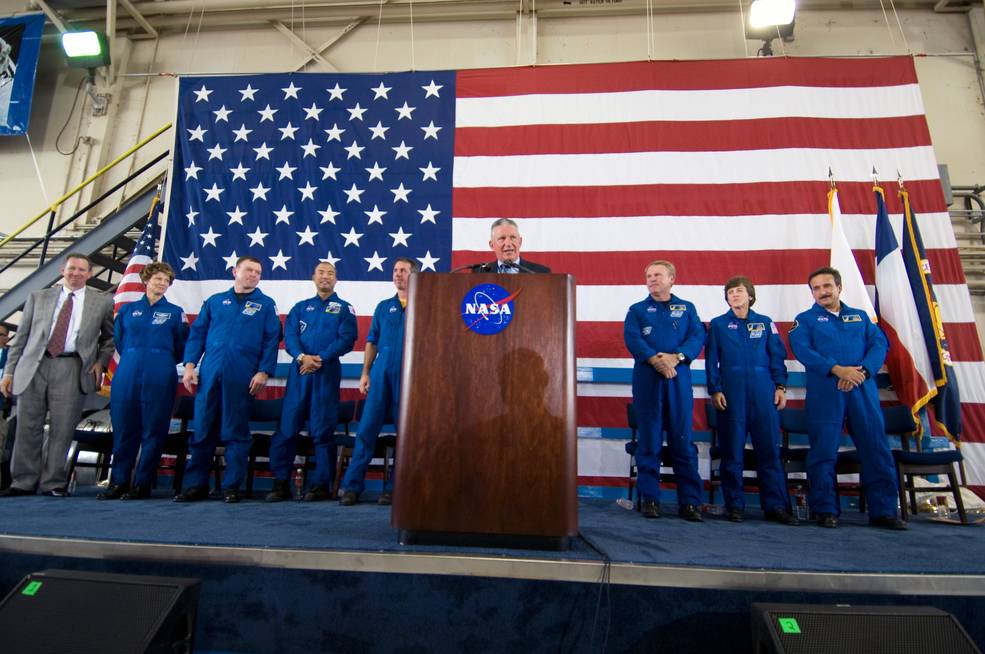
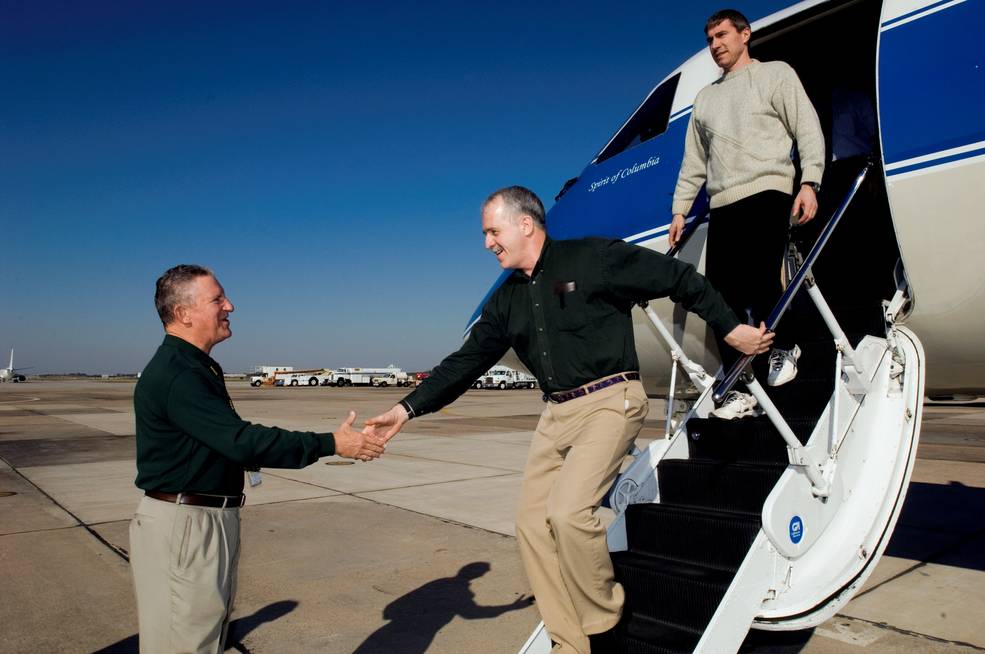
Left: At Ellington Field, director of NASA’s Johnson Space Center in Houston Jefferson D. Howell addresses the crowd at the August 2005 welcome home reception for the STS-114 Return to Flight crew. Right: Howell, left, welcomes the Expedition 11 crew to Ellington in October 2005.
On Oct 3, 2005, Howell announced his intention to leave his position as director of JSC to join the Lyndon B. Johnson School of Public Affairs at the University of Texas in Austin. He stayed on until NASA Administrator Michael D. Griffin named Michael L. Coats as his successor on Nov. 7. Two days later, in one of his last official acts as center director, Howell officiated at the ribbon cutting of Building 27, the new Astronaut Quarantine Facility. Two weeks later, colleagues and friends threw Howell a retirement party at Space Center Houston. He continues to maintain strong ties to the JSC community.
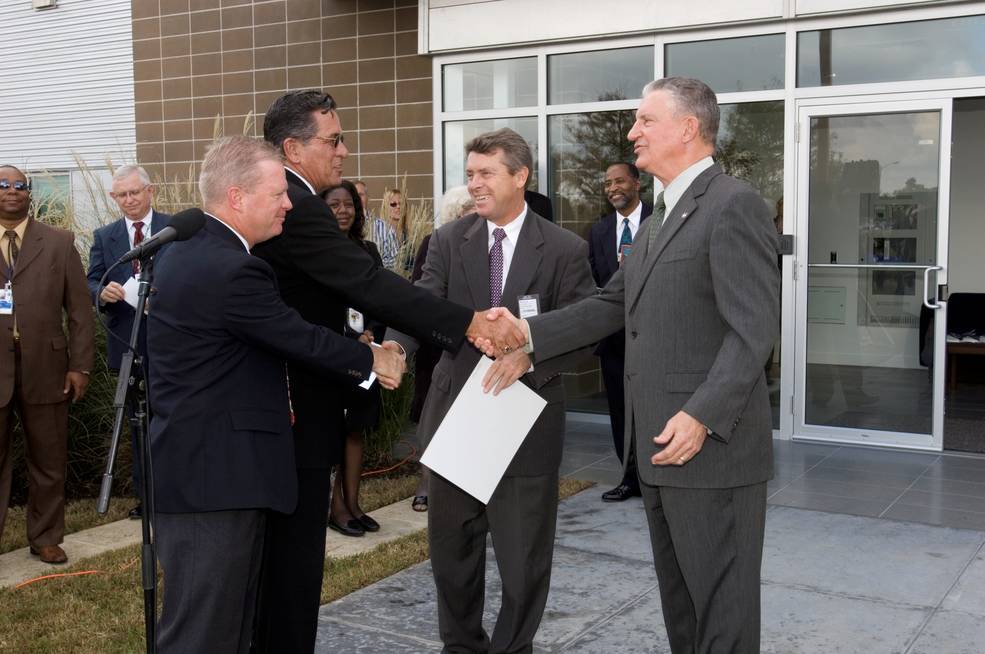
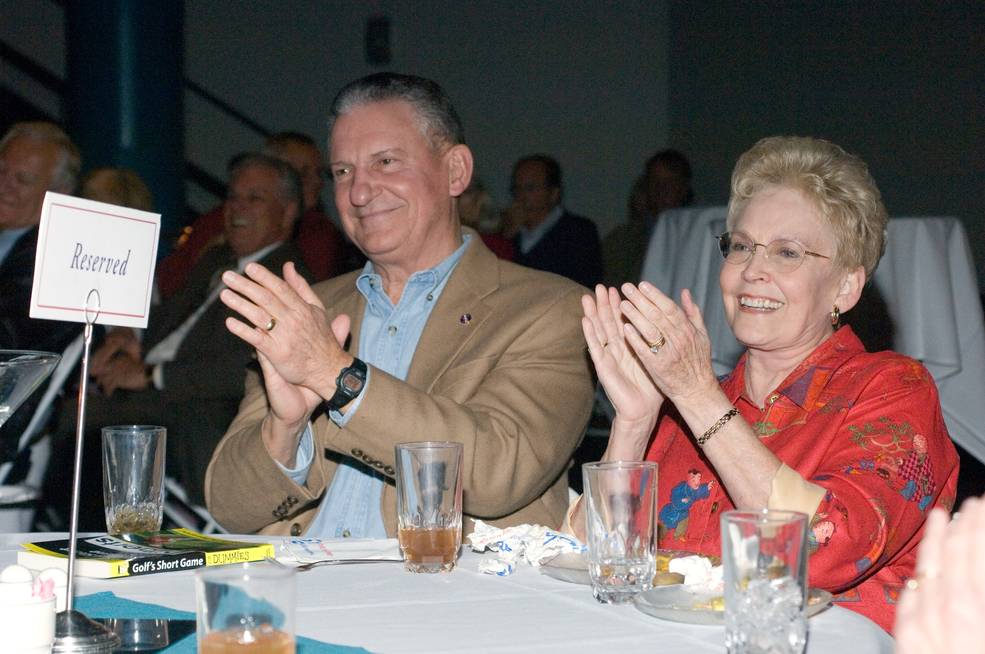
Left: Jefferson D. Howell, director of NASA’s Johnson Space Center in Houston, at the November 2005 ribbon cutting ceremony for Building 27, the Astronaut Quarantine Facility. Right: Howell and his wife Janel enjoying the entertainment at his retirement party at Space Center Houston in November 2005.
The next installment in this series will cover JSC’s next two directors who oversaw the completion of the space station, the retirement of the space shuttle, and new directions for future space exploration.
John Uri
NASA Johnson Space Center







